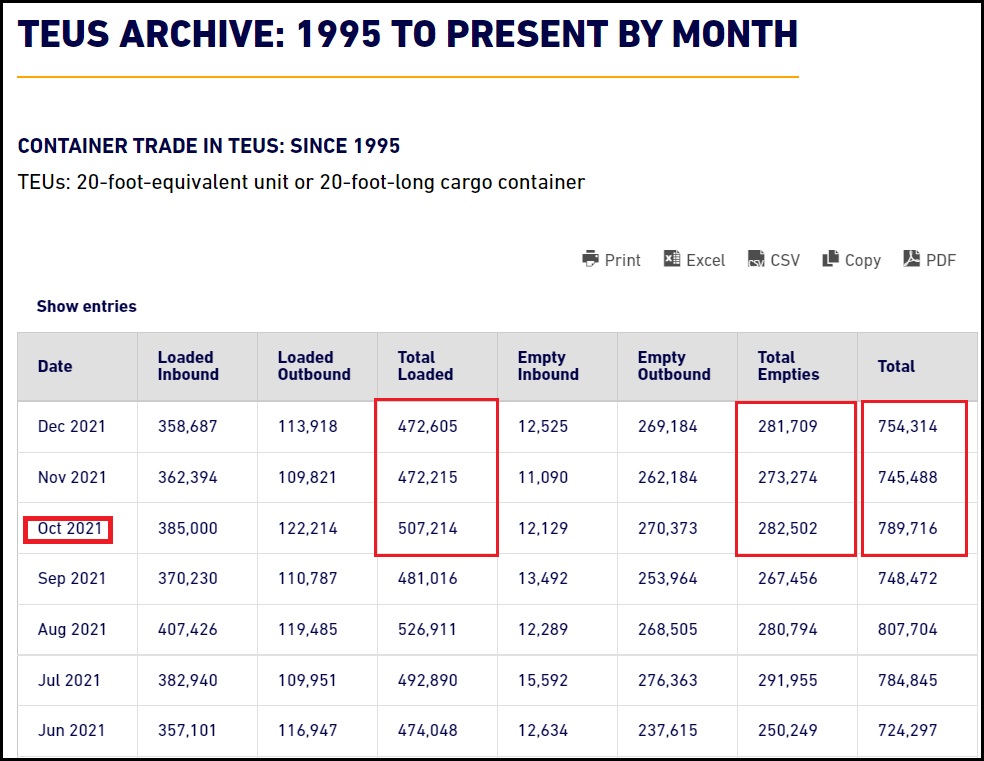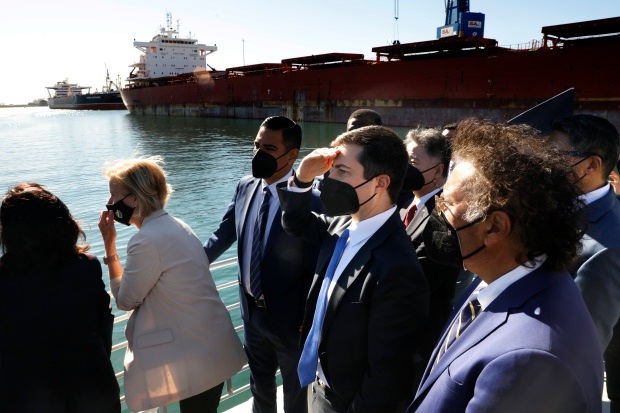December Report from Long Beach Shows Port Handling Less Cargo Than When Biden Announced Expanded Port Operations

When Joe Biden took to the microphones in October to announce, “a series of public and private commitments to move more goods faster, and strengthen the resiliency of our supply chains, by moving towards 24/7 operations at the Ports of Los Angeles and Long Beach,” the supply chain objective was to increase the productivity of the ports. However, data released for November [SEE HERE] and now December, show exactly the opposite.
Transportation Secretary Pete Buttigieg visited both ports recently. Both ports, along with Oakland, also made the arriving ships remain further offshore than when the October announcement was made. They are hiding the ships.
For some unknown reason the Port of Los Angeles (POLA) has delayed reporting of December; but the Port of Long Beach (POLB) just released their data {LINK}. What the statistics show is that less cargo is being handled now, than it was when the 24/7 port operations announcement was made:

The purpose of telling the ships to await their port time in a queue farther offshore is transparent. The Biden administration wants to give the illusion they eliminated the bottleneck of container ships. Out of sight is out of mind.
Operation ‘Hide the Ships’ allows the administration to make claims about port efficiencies and increased productivity that are abjectly false. The data from the two months after the announcement shows less container offloading and onloading happened in November and December than happened in the prior month of October when the new initiatives were announced.
Many of the high-end canned cat foods (wet foods) come from Thailand processing, and we are told they are sitting in containers offshore right now.
Port of Long Beach – […] Trade was down 7.5% in December compared to the same period in 2020 with 754,314 cargo container units moved. Imports declined 11.7% to 358,687 TEUs. Exports dropped 13.9% to 113,918 TEUs, while empty containers climbed 1.5% to 281,709 TEUs. (link)






Post a Comment